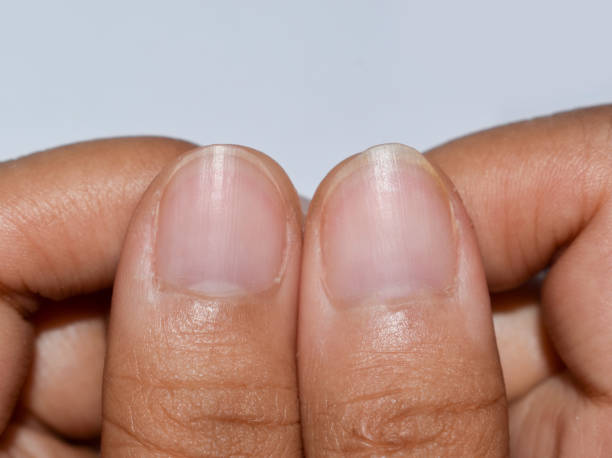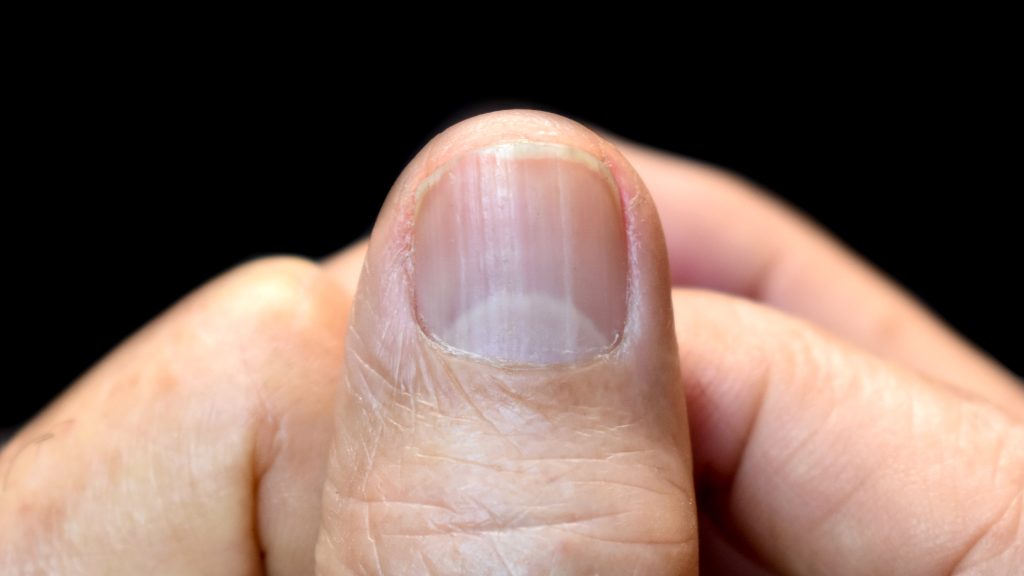
Have you ever noticed the small whitish arc at the base of your nails, just above the cuticle? It looks discreet, almost insignificant… but it may actually hold clues about your overall health. If it changes in shape, fades, or becomes unusually visible, this “lunula” might not just be a cosmetic detail.
What Exactly Is the Lunula?

The lunula—Latin for “little moon”—is the pale, half-moon-shaped area often seen at the base of the nail, most prominently on the thumbs. Far from being a decorative quirk, it represents the visible portion of the nail matrix, which is the growth zone of the nail.
This is where keratin, the protein that forms nails, is produced. Its lighter appearance comes from the absence of visible blood vessels in that area, in contrast to the pinkish tone of the rest of the nail.
Why Are Some Lunulae Visible While Others Are Not?
Not everyone’s lunula is equally visible. Its appearance depends on factors such as age, genetics, skin tone, and even lighting conditions. In some people, it is clear and pronounced; in others, barely noticeable or absent.
Generally, a discreet or missing lunula is not a cause for concern—as long as it has not suddenly changed in size, color, or shape.
When to Pay Attention to Changing Lunulae
While variations are usually harmless, certain noticeable changes can sometimes reflect underlying imbalances in the body.
- Enlarged Lunulae: If the lunula becomes unusually large—covering more than a third of the nail on several fingers—it may be associated with an overactive thyroid or elevated blood pressure. In this case, a medical consultation is advisable.
- Disappearing Lunulae: A gradual fading or disappearance of the lunula across multiple nails may point to fatigue, iron deficiency, or a lack of vitamin B12. Though not always serious, it can be a subtle sign worth checking, especially if you feel persistently tired.
- Changes in Color
- Bluish or purplish lunula: May indicate poor oxygenation in the blood.
- Grayish lunula: Can sometimes be linked to medications or reduced circulation.
- Red lunula: Could suggest local inflammation.
What Your Lunula Can Reveal About Lifestyle

Just like your skin and hair, your nails—and their lunulae—can reflect aspects of your lifestyle and overall health.
A healthy, visible lunula may indicate:
- A nutrient-rich, balanced diet (with iron, protein, zinc, and B vitamins),
- Good hormonal balance,
- Well-managed stress levels.
Conversely, very pale or absent lunulae may sometimes suggest:
- A restrictive or unbalanced diet,
- High or chronic stress,
- Hormonal changes or deficiencies during recovery periods.
When Should You See a Doctor?
A changing lunula is rarely an emergency, but it should not be overlooked. It is best to consult a healthcare professional if you notice:
- Persistent or unusual discoloration,
- Disappearance across several nails,
- Irregular or distorted shapes,
- Associated symptoms such as chronic fatigue, hair loss, or pale skin.
Final Thought
The lunula is more than a small “half-moon” on your nails—it is a subtle indicator of how your body is functioning. While most variations are harmless, paying attention to noticeable changes can help you spot imbalances early and take better care of your health.